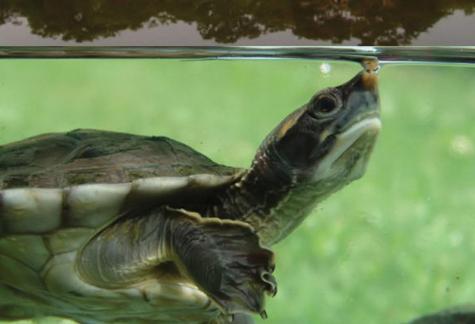Central American River Turtle (Dermatemys mawii)

About the Species
The Central American river turtle is an aquatic species found in lakes and deep rivers of the Atlantic lowlands of southeastern Mexico, Belize, and northern Guatemala. Genetic and archaeological evidence indicates that river turtles were harvested and transported by the ancient Mayans, suggesting that it has economic significance that dates back thousands of years.
The principle threat to this species is intensive harvesting for human consumption. River turtles have been so overharvested that they now can only be found in remote areas that are difficult for people to access. The population is also affected by habitat loss due to human activities related to agriculture and urban growth. Since the sex of young turtles is determined by egg incubation temperature, loss of riverbank vegetation in river turtle habitat and climate change are affecting the ratio of female and male turtles in the wild. This can lead to problems with mating and reproduction.
CBSG’s Role
At the invitation of the Universidad Juarez Autonoma de Tabasco, CBSG Mesoamerica and CBSG Mexico co-facilitated a PHVA workshop to develop a conservation strategy for this species to guide the university, the Tabasco Government, and other stakeholders in their conservation efforts.
Participants included researchers, government agencies, NGOs, and turtle “ranchers” that manage commercial turtle populations called UMAs. Workshop discussions included strategies for periodic genetic exchange of turtles among UMAs and management options to address skewed sex ratios. UMA populations may serve both as assurance populations against species extinction as well as a potential legal source of turtle meat to alleviate pressure on wild turtles.
The Results
The PHVA generated increased information about wild turtle populations and led to recommended conservation actions that were incorporated into turtle conservation programs in Mexico and informed similar efforts in Guatemala. Claudia Zenteno, head researcher of the Central American turtle conservation program in Tabasco, was appointed as the State of Tabasco’s Secretary of Natural Resources and Environmental Protection in January 2013. From that position, Claudia is boosting actions that are part of the Conservation Strategy, the workshop’s main product.
More Information
- Workshop Report
- More about Central American River Turtles
- Back to CBSG Case Studies



